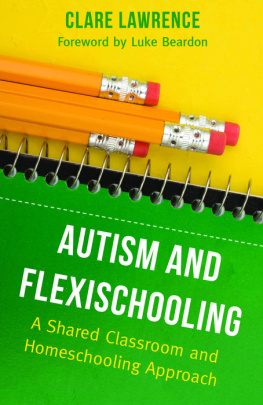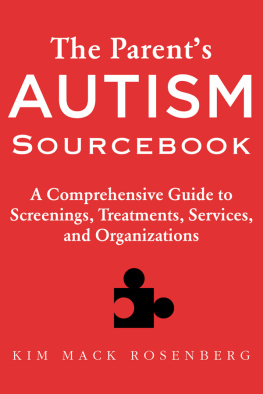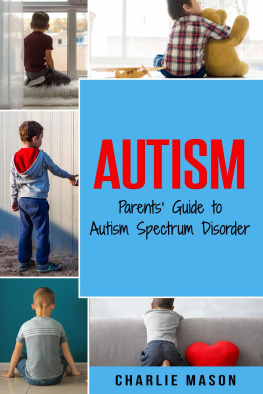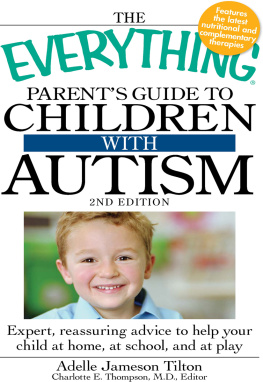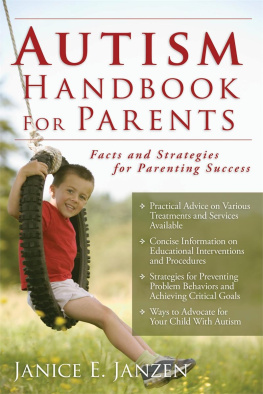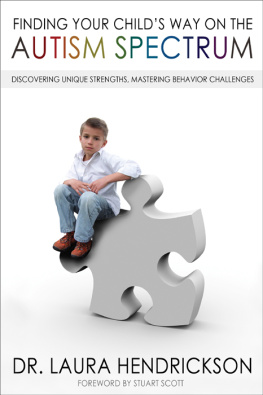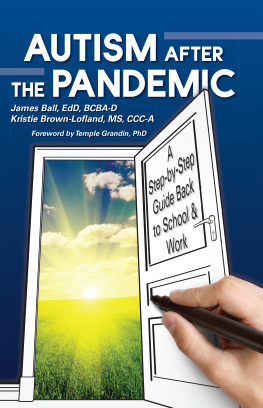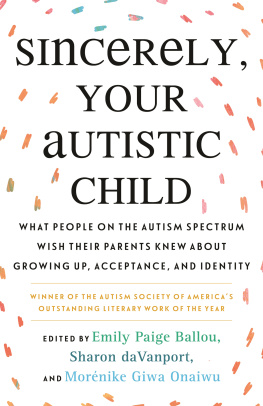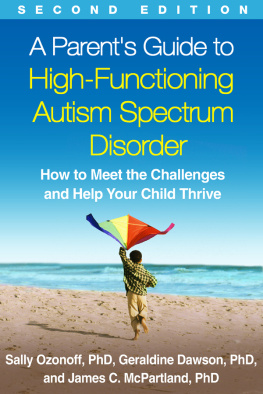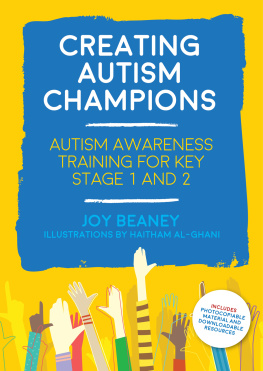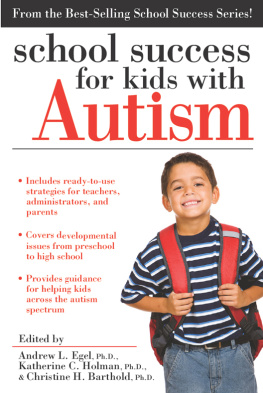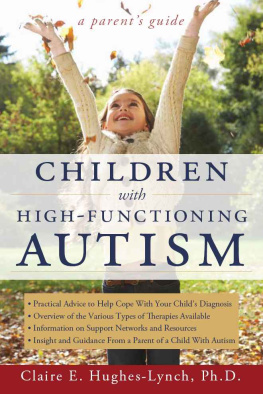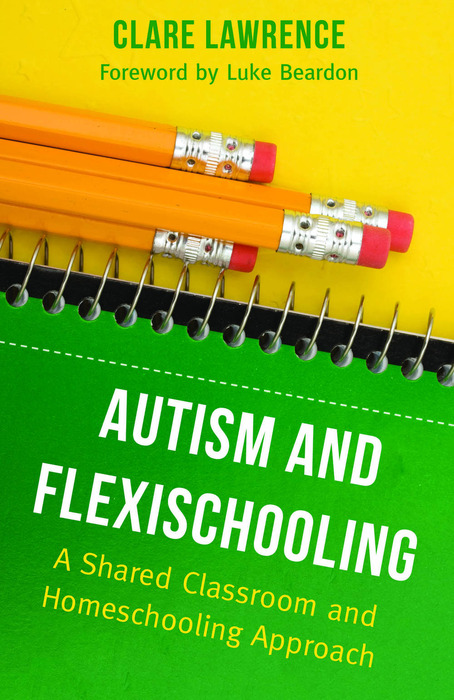Autism and Flexischooling
A Shared Classroom and Homeschooling Approach
Clare Lawrence
Foreword by Dr Luke Beardon
Jessica Kingsley Publishers
London and Philadelphia
First published in 2012
by Jessica Kingsley Publishers
116 Pentonville Road
London N1 9JB, UK
and
400 Market Street, Suite 400
Philadelphia, PA 19106, USA
www.jkp.com
Copyright Clare Lawrence 2012
Foreword copyright Dr Luke Beardon 2012
All rights reserved. No part of this publication may be reproduced in any material form (including photocopying or storing it in any medium by electronic means and whether or not transiently or incidentally to some other use of this publication) without the written permission of the copyright owner except in accordance with the provisions of the Copyright, Designs and Patents Act 1988 or under the terms of a licence issued by the Copyright Licensing Agency Ltd, Saffron House, 610 Kirby Street, London EC1N 8TS. Applications for the copyright owners written permission to reproduce any part of this publication should be addressed to the publisher.
Warning: The doing of an unauthorised act in relation to a copyright work may result in both a civil claim for damages and criminal prosecution.
Library of Congress Cataloging in Publication Data
Lawrence, Clare.
Autism and flexischooling : a shared classroom and homeschooling approach / Clare Lawrence ;
foreword by Luke Beardon.
p. cm.
Includes index.
ISBN 978-1-84905-279-5 (alk. paper)
1. Autistic children--Education. 2. Inclusive education. 3. Home schooling. I. Title.
LC4717.L375 2012
371.94--dc23
2012013487
British Library Cataloguing in Publication Data
A CIP catalogue record for this book is available from the British Library
ISBN 978 1 84905 279 5
eISBN 978 0 85700 582 3
Converted to eBook by EasyEPUB
A Note on Terminology
This book uses the term ASD. This is increasingly becoming an accepted term, but what does it mean? Does it include both autism and Asperger syndrome? Is Asperger syndrome the same as autism or is it something different? The initials ASD are usually taken to stand for autism spectrum disorder, a phrase that has been coined to incorporate both autism and Asperger syndrome, their perceived similarities and their perceived differences. However, nothing is simple and this term autism spectrum disorder carries a number of difficulties.
For a start, what is this spectrum? The term was first used by Lorna Wing and Judith Gould back in 1979 when it began to be understood that autism does not present as a single concrete condition but rather as something that can manifest itself over a whole spectrum of presentation. Their perception in the late seventies certainly did a great deal to widen our understanding of autism, but their term spectrum has been somewhat hijacked since then. Many use it to imply that there is a range of autism, and that some autism is somehow worse than others. People talk about the spectrum running from mild to severe, which misunderstands the nature of autism. Autism is a difference in the way a persons brain processes information. How can this be seen in terms of good or bad, mild or severe? Surely it is simply different?
Similarly, the term disorder to stand for the the D in ASD is a real problem. So much about autism has been defined in terms of disorder, disability or impairment. Perhaps this is understandable if autism is to be seen as a medical condition. Doctors do so love to find things wrong with us! Increasingly, though, autism is being understood as a difference in the way the brain works rather than as an impairment. Indeed, huge strides are being made in the Can Do field of diagnosis. If someones brain works in a different way to someone elses, surely that can be observed just as much through what that person can do better as through what he struggles with? Perhaps the difference in the way his brain processes information can be observed through superior memory or through an enhanced ability to recognise pattern or to identify musical pitch.
The debate as to whether Asperger syndrome and autism are the same condition or two different ones is further confused by the way some people have come to use the terms. Many use Asperger syndrome to describe people with autism who have average or superior intelligence. This is fine in itself, but what is far from fine is if this definition of Asperger syndrome then implies that a definition of autism must involve below average or deficient intelligence. It most certainly does not. Autism is autism, and intelligence is intelligence. Cross referencing the two is like saying that a car must be fast because it is blue. Some cars are blue and some cars are fast, but I doubt whether a driver in a Formula One race would use the colour as the deciding factor when choosing which car to race.
All of this leaves the ordinary person somewhat flummoxed. The people this book is written for parents and teachers and children with an ASD are unlikely to be too concerned with the ebb and flow of the autism vs Asperger vs spectrum debate. They merely want to get on with it. So, throughout this book I have used the term ASD as shorthand. It stands, for me, for an autism spectrum difference: autism because that is the proper name for this different way of neuro-processing; spectrum because that is the current most accepted way to include Asperger syndrome and difference because that is what it is. Autism is a difference and as Gunilla Gerland, a woman with autism wrote, being different is just as good as being like everyone else (Gerland in Hesmondhalgh and Breakey, 2001, p.45).
Foreword
The clue is in the title specifically, the word flexi. Representative of flexible when used in compound words, is one of the critical concepts that can lead to successful lives for people with autism. Individuals with autism are well known for being rather rigid and inflexible; ironically, however, many individuals and parents actually find that the rigidity of the system (in this instance, educational institutions and the wider education agenda) is what is holding their child back or, in many cases, actually harming their child. The lack of flexibility in teaching styles, teaching environments, temporality (i.e. duration of lessons), the sensory environment and curriculum to cite just a few can cause extreme problems for the child with autism. What Clare identifies is an exceptionally effective potential solution to many, if not all, of the problems faced by parent, teacher and child.
Clare writes with enviable clarity and intelligence. She makes very good sense in an area that traditionally is highly complex. Her arguments are sound and many of what she highlights as problematic areas in critical need of change will resonate with so many parents of children with autism. Educational years are crucial to the development of the child; equally, if the child is exposed to difficult situations in those years the impact can be huge. Seemingly inconsequential events can lead to major problems later in life; the day-to-day grind of being exposed to an often bewildering, chaotic, stressful and demanding mainstream school for the autistic individual can have a massive and devastating impact on self-esteem, confidence and mental health. It is vital that all options are explored in order to reduce the very real risk to the individual.

